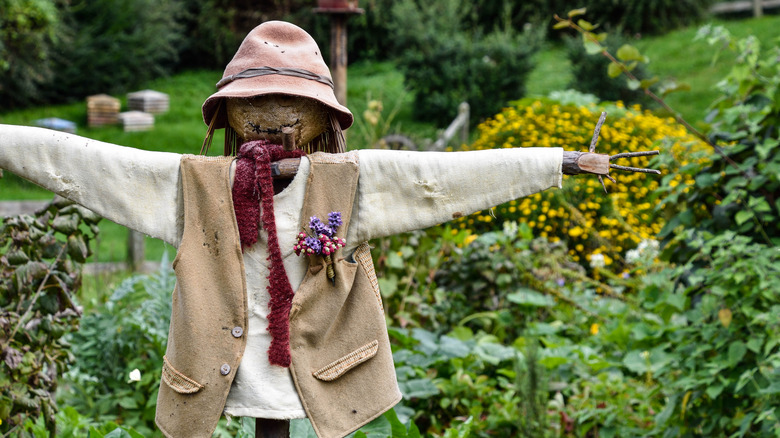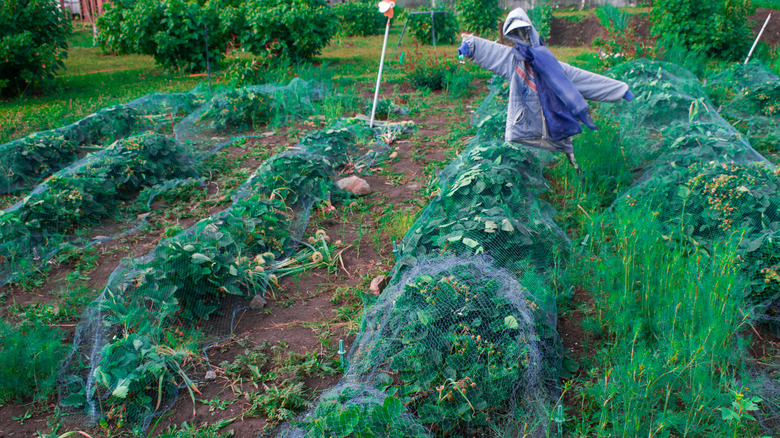Do Scarecrows Really Work To Keep Pesky Birds Out Of Your Garden?
Gardens, with their vibrant blooms and luscious fruits, are a sight to behold. However, for many gardeners, there's a constant battle waging against pesky birds eager to feast on their hard work. Enter the scarecrow — a timeless guardian of fields and gardens. But do these iconic figures genuinely deter feathered intruders? The answer is yes, if appropriately utilized.
At the heart of the scarecrow's effectiveness is its novelty. Scarecrows, in their most traditional sense, are human-like figures designed to deter birds and other pests from gardens and fields. The initial introduction of a scarecrow into an environment can effectively spook birds, primarily because they interpret this unfamiliar object as a potential predator or threat. Like many animals, birds are instinctively wary of new environmental elements. However, this effectiveness can wane over time as birds continually observe the scarecrow and discern that it poses no real danger. They might largely ignore it once they establish that the scarecrow is non-threatening.
That's where movement becomes essential. Undoubtedly, birds are keen observers. A scarecrow that integrates motion, either through design or due to natural factors like wind, can be much more convincing as a deterrent. Elements such as flapping arms, a rotating head, or even appended items like CDs that reflect light and spin can create unpredictable patterns. This can unsettle birds, making them less likely to venture near the moving object out of an abundance of caution.
Variability, sensory cues, and species of bird
Birds are intelligent creatures, and just as humans might become used to a static object in their daily environment, birds can also habituate to a non-changing scarecrow. By regularly modifying the scarecrow's appearance – whether by altering its clothes, repositioning it, or even changing its posture — you reintroduce that element of novelty and uncertainty for the birds. This constant change keeps them guessing, increasing the scarecrow's efficacy. Think of this as creative maintenance.
While visual deterrents play a significant role, integrating auditory cues can amplify a scarecrow's effectiveness as well. These are typically a device that is triggered to make noise in response to movement. It could even be a radio intermittently playing voices, which might suggest human activity to birds. Alternatively, you can use a device that emits the calls of predatory birds. Similarly, distress calls of the same bird species can invoke a sense of danger, making the garden or field less appealing.
That brings us to the challenge of deterring different kinds of birds. Different species possess different behaviors, risk tolerances, and intelligence levels. Some might be inherently more cautious and easily deterred by a scarecrow, while others might be bolder or quicker to recognize a non-threat. There are even instances where birds, rather than being discouraged, may see a scarecrow as a convenient perch, entirely defeating its purpose. It's essential to know your culprits and cater your solution to the species as best you can for the most effectiveness.
Additional deterrents to hep bolster your scarecrow
If you feel like your scarecrow has lost a bit of its touch despite your creative maintenance, it may be best to take on more of a multi-faceted approach to bird deterrence. Perhaps layering deterrents will help you increase its overall effectiveness. For instance, try to use netting around your plants in addition to the scarecrow to create more disturbances that many birds find off-putting. The combined sensory overload can be more compelling in keeping birds at bay.
But we cannot put all the blame on our scarecrow. The immediate surroundings in which a scarecrow is placed also influence its effectiveness. Smaller birds might already be more cautious if a garden borders a dense woodland where predatory birds are known to perch. In such an environment, adding a scarecrow could bolster that inherent wariness. Lastly, pay attention to the condition of your crop or garden: Birds, like all animals, are driven by basic needs. In such scenarios, the food resource's value may diminish the scarecrow's effectiveness.
Plainly, scarecrows for your garden can indeed play a role in deterring birds, but multiple factors influence their success. A proactive approach — incorporating movement, regular changes, and additional deterrents — can bolster a scarecrow's effectiveness, making gardens less appealing to our feathered friends. So, while the age-old scarecrow might not be a foolproof solution, with a bit of creativity and an understanding of bird behavior, it can become a valuable ally in garden protection.


